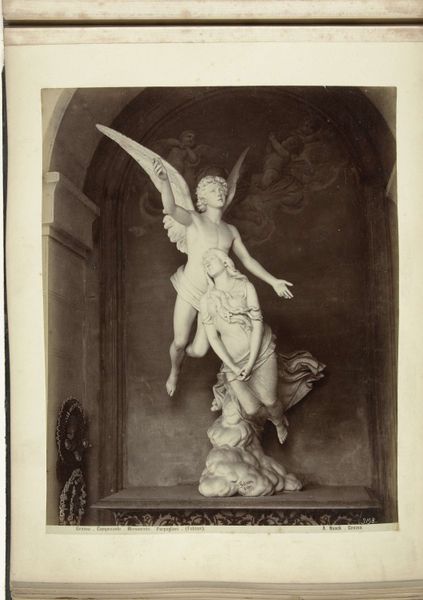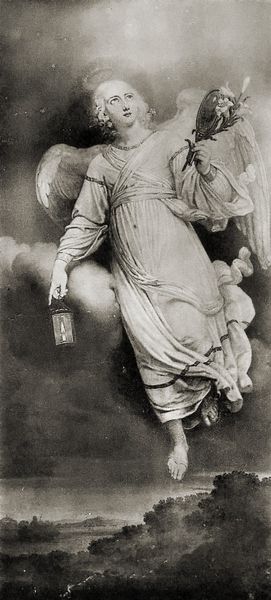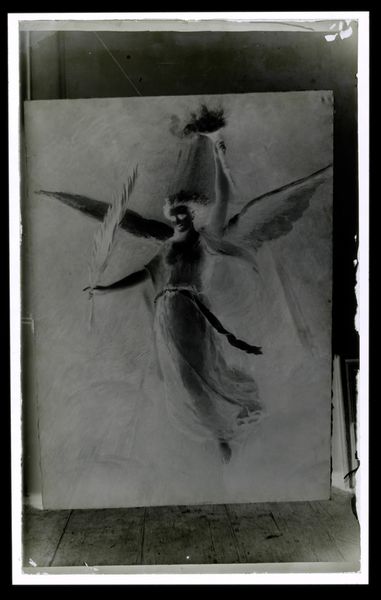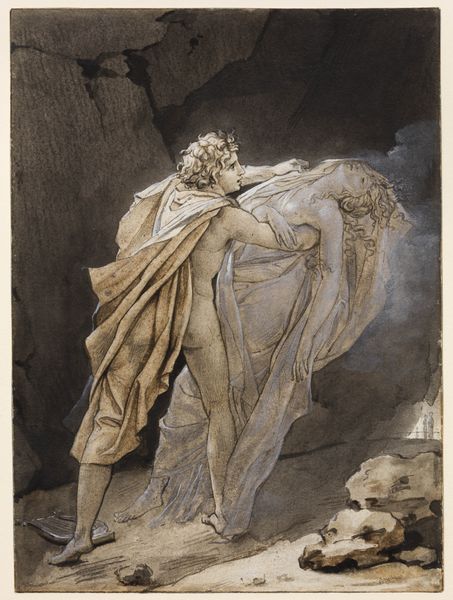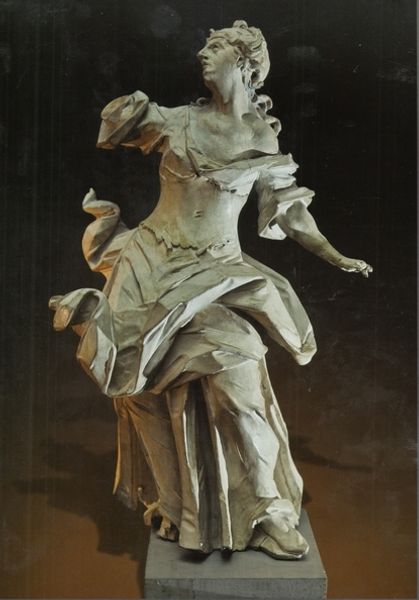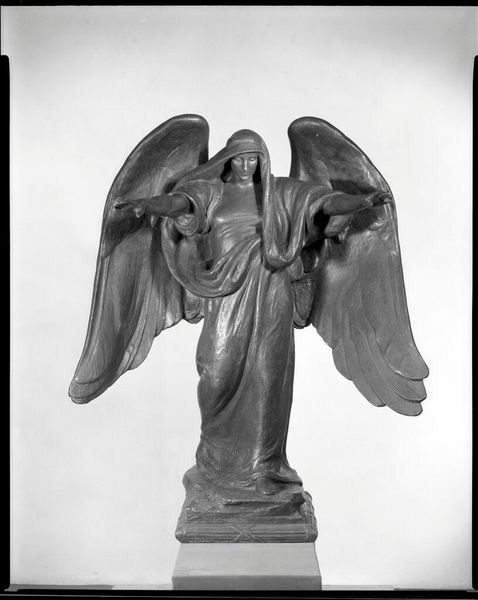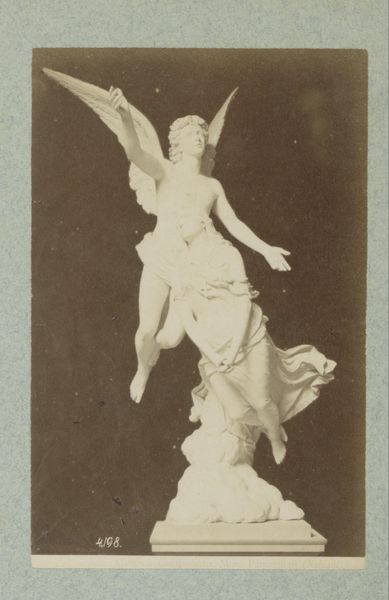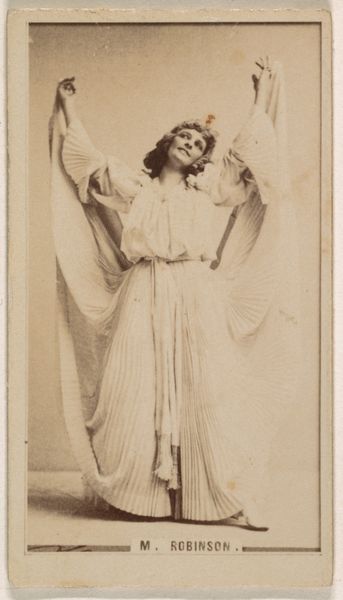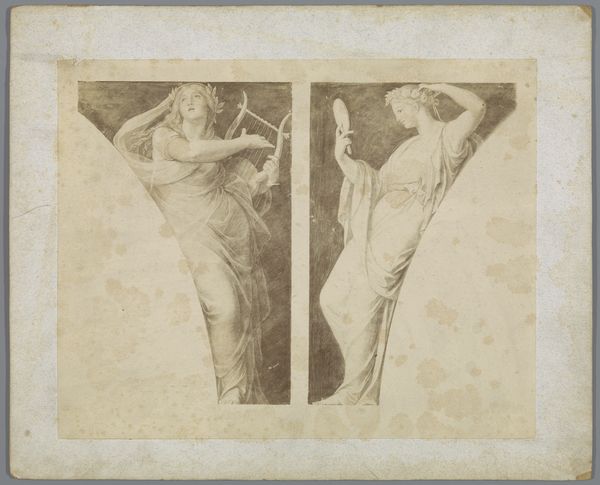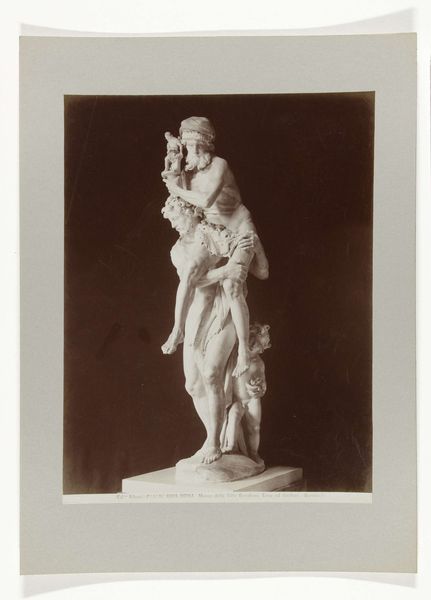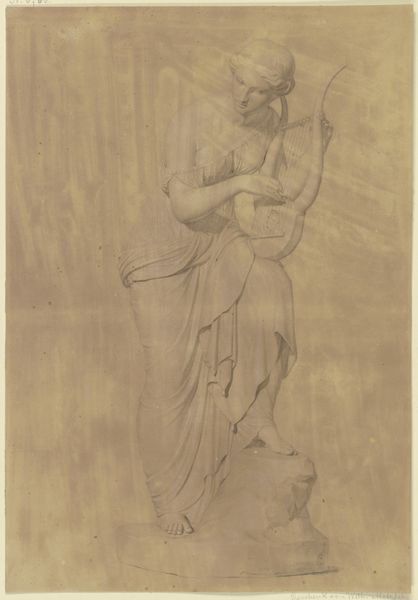
Winged Victory of Samothrace (Victoire de Samothrace) c. 1860s
0:00
0:00
silver, print, photography, sculpture
#
silver
# print
#
stone
#
sculpture
#
greek-and-roman-art
#
photography
#
ancient-mediterranean
#
sculpture
Dimensions: 45.4 × 36.8 cm (image/ paper/ mount)
Copyright: Public Domain
Curator: This striking photograph presents us with a rendition of the Winged Victory of Samothrace, also known as Victoire de Samothrace. Though this print is estimated to have been produced in the 1860s, the sculpture it depicts comes to us from ancient Greece. Editor: The angle of the photograph is compelling. The draped fabric almost has more prominence in this version, accentuating its intricate carvings. Even though it is not as complete as other sculptures from antiquity, I am drawn to how it embodies ethereal, upward movement. Curator: This image belongs to an era of increased accessibility and distribution. Before mass tourism, photography allowed far wider audiences to encounter major works like this one. Consider the layers involved—quarrying the marble, sculpting the original Nike perhaps to commemorate a naval victory, then the laborious creation of this image to spread the work further. Editor: Yes, and observe the deliberate use of light and shadow here. The drapery clinging to her form accentuates the form and tension, offering dynamism as it captures the effect of the wind. Even without the sculpture's original setting and context, the artist still manages to elicit power in this single image. Curator: It's fascinating to ponder the social functions of this object—both in antiquity and during the era when this photograph was created. It functioned as propaganda, certainly, perhaps celebrating power in a young country struggling with its national identity. The consumption of classical imagery at this time says quite a lot about aspirations to be taken seriously on the world stage. Editor: Precisely. It reminds us that visual art can move and thrill without replicating realism. Abstraction in presentation offers its own path to appreciation. Curator: The means by which these historical artworks achieve such continued resonance truly makes you appreciate the process behind not only the piece itself, but also how these types of images come to have so much weight. Editor: Indeed. Analyzing its visual structure opens us up to different ways of understanding culture, context, and history, reminding us of the sculpture’s inherent aesthetic brilliance.
Comments
No comments
Be the first to comment and join the conversation on the ultimate creative platform.
